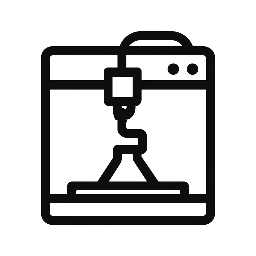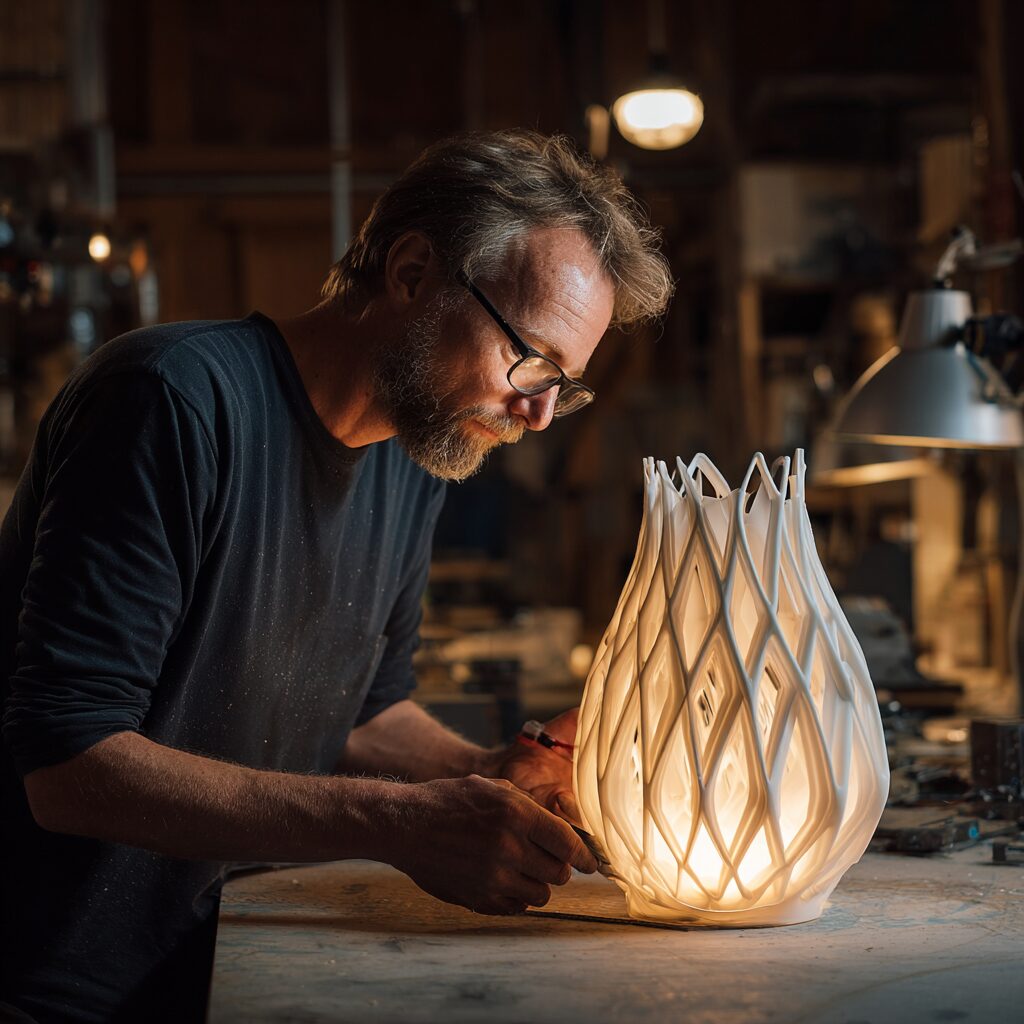Exploring New Technologies in Additive Manufacturing
How Blockchain, Quantum Computing, Robotics, and Data Systems Are Redefining the 3D Printing Revolution
🌍 Introduction: Beyond the Printer
Additive manufacturing — or 3D printing — has evolved far beyond its early reputation as a prototyping tool. Today, it’s a cornerstone of digital manufacturing, powering innovations from aerospace to biomedicine. But what’s even more transformative is how adjacent technologies — blockchain, robotics, quantum computing, artificial intelligence, and advanced data systems — are converging with additive manufacturing to form an entirely new industrial framework.
This convergence is not just changing how we produce; it’s redefining how we think about value, distribution, and innovation itself.
“We’re witnessing the merging of the digital and physical worlds — where information becomes material and design becomes currency.”
🧠 1. AI and Machine Learning: Smart Design for a Smarter Future
AI and machine learning are rapidly becoming the “brains” of the 3D printing ecosystem. Advanced algorithms now assist designers in creating optimized geometries that reduce material waste, improve strength, and shorten print times.
Key Applications:
-
Generative Design: AI analyzes thousands of possible designs for a part and produces the most efficient solution based on real-world parameters like stress, temperature, and motion.
-
Predictive Maintenance: Machine learning models monitor 3D printers to anticipate component failure before it happens.
-
Adaptive Layering: Smart software dynamically adjusts print parameters for precision and surface quality.
AI doesn’t just make machines smarter — it enables mass customization and hyper-efficiency, cornerstones of next-generation manufacturing.
🤖 2. Robotics and Autonomous Manufacturing
The future of additive production is automated, modular, and self-sustaining. Robotic systems are now integrated directly into additive workflows, bridging the gap between design and deployment.
Emerging Use Cases:
-
Robotic Arms as Printers: Large-scale robots equipped with extrusion heads are printing everything from homes to aircraft components.
-
Swarm Manufacturing: Multiple small robots collaborating on a single large structure — a vision inspired by nature and enabled by real-time data coordination.
-
Autonomous Factories: Robotic 3D printers operating in unmanned environments, monitored remotely through cloud-based AI systems.
This evolution represents the dawn of the machine economy — where autonomous systems not only produce goods but also communicate, learn, and optimize independently.
🔗 3. Blockchain: Securing Design, Authenticity, and Collaboration
As digital manufacturing becomes distributed, questions of trust, security, and intellectual property become critical. Blockchain technology provides a solution by embedding transparency and traceability into the 3D printing supply chain.
Blockchain Applications in Additive Manufacturing:
-
Design Ownership & Licensing: Digital design files can be tokenized as non-fungible tokens (NFTs), proving authenticity and ownership.
-
Smart Contracts: Enable secure transactions for design rentals, royalty payments, and manufacturing rights without intermediaries.
-
Supply Chain Verification: Track the origin and journey of materials and components through immutable ledgers.
-
Tokenized Manufacturing: Factories or design teams can issue digital tokens that represent stakes in a project, democratizing investment in industrial production.
This blockchain-manufacturing convergence creates a world where every digital object has a verifiable identity, and every transaction — from design upload to delivery — is trustless, transparent, and decentralized.
“The next industrial revolution will be printed, but it will also be ledgered.”
🪙 4. The Crypto Economy of Fabrication
Crypto and tokenization are reshaping how innovation is funded and shared. Traditional manufacturing requires centralized financing and infrastructure — but tokenized ecosystems allow global communities to crowdfund and co-own 3D printing projects.
Imagine investing directly in a decentralized aerospace startup or a regenerative medicine research project through a manufacturing DAO (Decentralized Autonomous Organization).
Participants earn tokens representing both financial value and voting rights — empowering an open-source industrial economy.
Furthermore, crypto payment systems make it possible for automated machines (like robotic printers) to handle micropayments for their own services, materials, or maintenance — effectively creating financial autonomy for machines.
The result? A distributed industrial marketplace, where innovation, production, and investment merge into a single digital-physical continuum.
⚛️ 5. Quantum Computing: Accelerating Additive Material Science
Quantum computing, though still emerging, promises to revolutionize simulation and materials discovery — the lifeblood of 3D printing.
By processing information at an atomic scale, quantum computers can model molecular interactions and material properties far faster and more accurately than classical computers.
Quantum-Driven Breakthroughs Ahead:
-
Material Simulation: Discovering new metal alloys, polymers, and composites optimized for additive production.
-
Thermodynamic Optimization: Predicting and preventing microstructural defects during printing.
-
Quantum-Enhanced Design: Using quantum algorithms to simulate design stress, cooling rates, and layer bonding with unprecedented precision.
In short, quantum computing transforms 3D printing from trial-and-error to predictive engineering, opening the door to materials and structures that were once physically unimaginable.


🧩 6. Data Centers and the Digital Fabrication Backbone
Behind every print lies a river of data — design files, simulation models, performance metrics, and blockchain transactions.
To manage this growing data ecosystem, the next generation of manufacturing data centers will act as digital foundries, storing and optimizing design intelligence.
How Data Infrastructure Shapes the Future:
-
Edge Computing for Factories: Real-time print monitoring and parameter adjustments closer to the source.
-
Cloud Collaboration: Designers, manufacturers, and researchers working simultaneously across continents.
-
AI + Data Synergy: Machine learning models improving with every print iteration through continuous feedback.
-
Design Repositories: Secure, blockchain-backed archives of 3D assets available on-demand for decentralized manufacturing nodes.
These new data architectures allow the physical world to operate with digital fluidity — bridging the gap between virtual creativity and tangible production.
🧬 7. Hybrid Manufacturing and Bioprinting
While metals and polymers dominate traditional 3D printing, the frontier now includes living cells, nanomaterials, and smart composites.
Hybrid systems combine additive and subtractive methods, allowing precise finishing and functional integration.
Meanwhile, bioprinting merges biology with engineering — enabling tissue creation, regenerative medicine, and drug testing platforms that replicate human physiology.
Each of these domains benefits from the computational and data infrastructure discussed earlier — forming a holistic technological ecosystem where biology, computation, and fabrication converge.
🚀 8. The Future Factory: Convergence in Action
Imagine a next-generation factory where:
-
Quantum simulations design the optimal material composition.
-
AI creates an efficient lattice structure.
-
Robotic 3D printers fabricate autonomously.
-
Blockchain secures every file and transaction.
-
Crypto tokens reward collaboration and fund future projects.
-
Data centers orchestrate the entire ecosystem across global nodes.
This isn’t a far-off dream — it’s the emerging operating system of modern industry.
It’s a world where machines are intelligent, data is currency, and design is democratized.
“In the factory of the future, innovation is not owned — it’s shared, verified, and rewarded.”
🌐 Conclusion: Printing the Future, Layer by Layer
The future of additive manufacturing isn’t just about better printers — it’s about smarter ecosystems.
By integrating robotics, quantum computing, blockchain, and decentralized data systems, 3D printing is transforming into a global digital organism — one that can learn, adapt, and evolve.
The lines between the digital and physical worlds are dissolving.
Designs become tokens, tokens fund factories, factories talk to clouds, and clouds learn from data.
What’s being built is not just the next wave of manufacturing —
it’s the foundation of the post-industrial civilization, where innovation is borderless, automated, and shared.


Leave a Reply